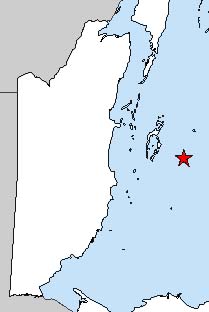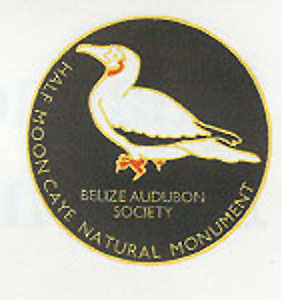 |
 |
Half Moon Caye Natural Monument
 |
 |
The Half Moon Caye Natural Monument was established in March of 1982, the first reserve to be created under the National Parks System Act of 1981. Half Moon Caye is located at the southeast corner of Lighthouse Reef, the eastern-most of three atolls in Belizean waters, some 50 miles southeast of Belize city. The caye itself, eight feet above sea level, is approximately 45 acres (18.2 ha) in size and is divided into two very distinct ecosystems. The western region, with its dense vegetation, has corresponding rich soil made fertile by guano from the thousands of sea birds nesting in this area. The eastern half of the caye is composed primarily of coconut palms with sparse vegetation. Half Moon Caye is a sand caye formed by the accretion of fragments of coral, shells and calcareous algae broken down by continuous wave action.
View from the Lighthouse
on Half Moon Caye

The lighthouse situated on the tapering eastern side, was first built in 1820. The present steel-framed tower was added to the brick base and completed in 1931. Today the lighthouse is solar powered.
Red-footed Booby
One of Half Moon Caye's principal inhabitants is the Red-footed Booby (Sula sula) numbering around 4000 birds. Protection of the booby rookery was one of the main reasons why the Natural Monument was created by the Belizean government. The adult booby population of this caye is unusual as almost all adults (98%) are white in color. The only other similar booby colony is on an island near Tobago. Elsewhere, adult Red-footed boobies are dull brown. The boobies co-exist with their pirate neighbors, the Magnificent Frigatebird, which have seven-foot wing spans. Some 98 other species of birds have been recorded on the caye; 77 of these are migrants.